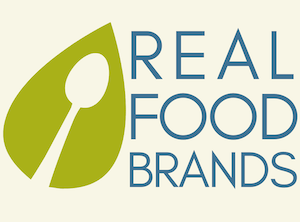We use a lot of different terms to describe the groups of people who buy our products and love our brands (tribes, consumer groups, personas, end users…) but at the end of the day they are each real people and we want to get to know them as much as possible so we can create products that truly solve their problems and bring them joy. But how do you get the information you need to do this?
Today on the Real Food Brands Podcast, host and Food & Bev Brand Strategist Katie Mleziva has a conversation with Britta Schell, a research and insights consultant who helps brands unlock growth by gaining a deeper understanding of their users. In this episode, we talk about how to create a consumer-first mentality that keeps their needs at the heart of everything you do in your food business.
Keeping Your Core Consumers at the Center of Everything You Do
“As a small business owner myself, it’s so challenging to be the only one making decisions in a lot of ways,” Britta says, “so I actually see it as an opportunity for teams to let the consumer lead them.” There can be a lot of pressure to focus on product development, but if you don’t understand who it’s for and how it fits into their life, you won’t know how to talk about it, let alone make improvements in a way that’s meaningful to the people actually using your food products. Basing your decisions on what you know about your consumers gives you an objective framework for making decisions, big and small.
What lies behind all of this is that most brands have untapped potential for growth. “When I meet with teams for the first time, they’re really thinking about consumers in terms of very basic demographics,” Britta says, “but when you and I interact with each other, that’s not how we’re connecting as people.” Thinking about what your customers watch on YouTube, where they shop or what car they drive helps you see the space your brand either currently inhabits or could inhabit, and it helps you communicate your brand food business’s message and brand story more powerfully.
Research Tools You Can Trust…and When to Get Help
When it comes to actually putting these principles into practice, there are a few important first steps. For one thing, Britta and Katie both recommend finding a way to visualize your customer. One idea Britta shares is to make your ideal consumer profile like a Facebook (or Tinder if that’s your brand’s personality) profile and attach a picture of who you’re talking about. Do your research, both the secondary research that’s already out there and if needed, your own primary research specific to your individual brand. If you aren’t able to do primary research, use the secondary research to make assumptions about your ideas consumer profile and adjust your document and assumptions as you get data to support or refine it. Katie and Britta discuss how to find the information you need, and how to maximize your investment in primary research.
“I always say bad data equals bad decisions,” Britta says, “when you’re really trying to make an important decision where a lot of investment and a lot of big choices and hopeful success depend on it, you do want to make the investment in quality research.” There are a lot of dynamics at play with customer research and focus groups, so it’s important to be mindful of everything from how you’re getting a focus group together to how you’re influencing the conversation. We cover how to do it yourself, and when and why it might be a good investment to call in a professional.
Listen to the full episode for more, including the difference between primary and secondary research, what you should do before you invest in your own data, and common pitfalls brands make when they’re conducting their own research.
Now, let’s go shake up shopping carts!
In This Episode:
- Why it’s important to be an advocate for your consumer.
- How documenting an ideal consumer profile(s) can help guide your business decisions.
- What to do if the people buying your products are not who you expected to buy.
- How research can reveal untapped potential for growth.
- Why it’s important to humanize your marketing research.
- The difference between primary and secondary research, and resources to find credible sources of research.
- The common pitfalls for brands conducting their own research.
Quotes:
“Ultimately, I see myself as an advocate for consumers, to make that that if there’s a friction point in their life or something that’s really challenging or something that could be really fun for them, I help connect the brand to that opportunity and hopefully improve lives in some way.” – Britta Schell
“When I meet with teams for the first time, they’re really thinking about consumers in terms of very basic demographics, but when you and I interact with each other, that’s not how we’re connecting as people.” – Britta Schell
“Primary research you want to maximize with questions that are completely unique to your brand and goal as a business.” – Britta Schell
“I always say bad data equals bad decisions. When you’re really trying to make an important decision where a lot of investment and a lot of big choices and hopeful success depend on it, you do want to make the investment in quality research.” – Britta Schell
Resources:


